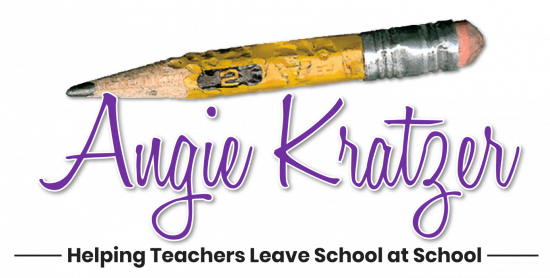When I was teaching, I spent around $1000 of my own money every year on my classroom. That’s insane. Those dollars went to everything from hygiene products I kept in my desk to the breakfast I served on test day to the kids who would otherwise have jacked themselves up on Pop Tarts and orange juice in the cafeteria. I don’t regret any of those expenditures, but teachers don’t have to do it that way anymore.

Here are some ways to spend someone else’s money:
Use ClassFund for Instructional Materials.
Teachers Pay Teachers offers a fee-free fundraising vehicle that your community can use to donate to your classroom. With ClassFund, you just use a template to set up a campaign and then get the word out. Think of it as something along the lines of GoFundMe but with NO FEES. Take a look at this 2020 blog post about it.
Use an Open House Request Board to Get Public School and Private School Parents on Board.
I’ve never taught in a school that gave out lists of items students would need. This concept just was not part of our culture. Instead, at our open house event at the beginning of each school year, I wrote on Post-It notes items I needed and created a board from which parents could grab on their way out the door. One note included one item and my name. Those requests ranged from boxes of tissue to white board markers to grocery story gift cards.
Tell Your Administration about School Access.
I love this one, but it does have a couple of drawbacks. School Access is TpT’s subscription program. Your school purchases credits, and teachers can use those credits to access resources. One downside is that there are no resources with a value over $15 in the School Access catalog.
Look into AdoptAClassroom.org.
Teachers have told me about their pandemic stress levels, but these stats from AdoptAClassroom boggle my mind:
- 74% of teachers purchased home printing items (printer, ink, paper) for distance learning.
- 41% of teachers purchased postage and mailing supplies to send supplies to students.
- 37% of teachers purchased software for distance learning.
- 37% of teachers purchased new technology for their own homes so they could teach remotely.
- 37% of teachers still had to purchase classroom consumables (pens, pencils, markers, folders, notebooks) for distance learning.
37% purchased their own software for distance learning??!! We’re getting into some serious money. Just to meet with teachers online and conduct webinars during the pandemic, I have spent about $200 on lighting. That has to be a drop in the bucket to the money spent by classroom teachers, especially those who were hybrid.
With AdoptAClassroom.org, you register and get linked up with donors who want to fund your classroom.
CAN I JUST SAY, HALFWAY THROUGH THIS POST, THAT IT IS DISGUSTING THAT I’M EVEN HAVING TO WRITE IT?
Just to highlight the ridiculousness of it all, here are a few recent examples of things our government IS spending money on:

- $50,000 for the National Forest Service to give out Smokey the Bear balloons
- $111,000 to send representatives to China to teach brewery managers about beer brewing techniques
- $500,000 for a teapot museum
- $14,000,000,000 (yes, that’s 14 billion) for a highway project that improved the traffic flow at Logan Airport
Priorities, people! Priorities!
Understand Purchase Orders and Invoices with Classroom Spending.
A purchase order comes from a DISTRICT or SCHOOL. An invoice comes from a VENDOR. I like this explanation from Bench.co:
“A purchase order is issued by the buyer, who wants to make sure they got exactly what they ordered, while an invoice is issued by the vendor, who wants to make sure they get paid.
Purchase orders are sent by the buyer to the vendor first, and they outline exactly what the order should contain and when it should arrive. It’ll include things like quantity of items, detailed descriptions of the items, the price, date of purchase, and payment terms.
A vendor sends an invoice only after they have approved the purchase.
When invoicing, vendors usually include the purchase order number (PO number) included on the original purchase order, so that finance can make sure the information on both forms is the same.”
So a district can send a purchase, or a vendor can send an invoice. The order may not matter, but that’s a district-by-district thing.
Here are some practical example of how I use an invoice:
I teach a four-module course called The Confident Student Writer: Simple Steps to Teaching Strong Rhetorical Analysis. Just a couple of days ago, I received an email from a teacher who wanted to use school funds to cover the cost of the course. I created an invoice for her and emailed it, she turned it in with a request for professional development funds, and once the school cuts the check and I receive it, I will add her as a student.
But there are faster ways. For example, another teacher joined the course using her school’s credit card. I created an invoice for her as well, and she was able to skip the paper check step and just have the treasurer register her for the class.
The Confident Student Writer opens up for enrollment just twice a year. If you’d like to be notified of future dates, hop on the waiting list. You’ll be added to my mailing list, so look for weekly tips, tricks, annoucements, and resource updates.
Know Your Administration’s Deadlines for Instructional Funds and Professional Development Funds.
There are two money buckets you may be able to access, but they do empty, so know your deadlines. Instructional funds go toward things a teacher needs in her classroom to do the job—books, consumables, etc. Professional development funds go to trainings, conferences, and school in-house staff development.
The takeaway: I know and you know that we’re going to spend money on our kids, but we can make a case to our administrators to foot the professional development bill, and we can make a case to our community to buy sticky notes and white board markers!
Trying to fund a classroom library? Check out this blog post.

